Abstract
Two experiments were conducted with pigeons to examine the effects of procedures that varied information transmission on observing responses. The basic procedure for Experiment I was one in which a trial terminated in either non-contingent reinforcement or timeout. Pecking during a trial produced either green (positive) or red (negative) keylights. If no pecking occurred no differential stimuli appeared. The probability of positive trials was either 0.25, 0.50, or 0.75. Observing response rates and relative frequencies of occurrence were highest when the probability of positive trials was 0.25 and lowest at 0.75. In Experiment II, a modified chain procedure was used in which responding produced either red or green lights. Reinforcement or timeout followed light onset by 15 sec. The correlation between the stimuli and the event at the end of the trial (reinforcement or timeout) was varied. Reinforcement followed green 100%, 90%, 70%, or 50% of the time that green occurred. Since the overall probability of reinforcement remained at 0.50, reinforcement followed red in either 0%, 10%, 30%, or 50% of the time that it occurred. The rate of responses that produced these stimuli varied as a function of the correlation. The greater the probability of reinforcement after green, the higher the response rate.
Full text
PDF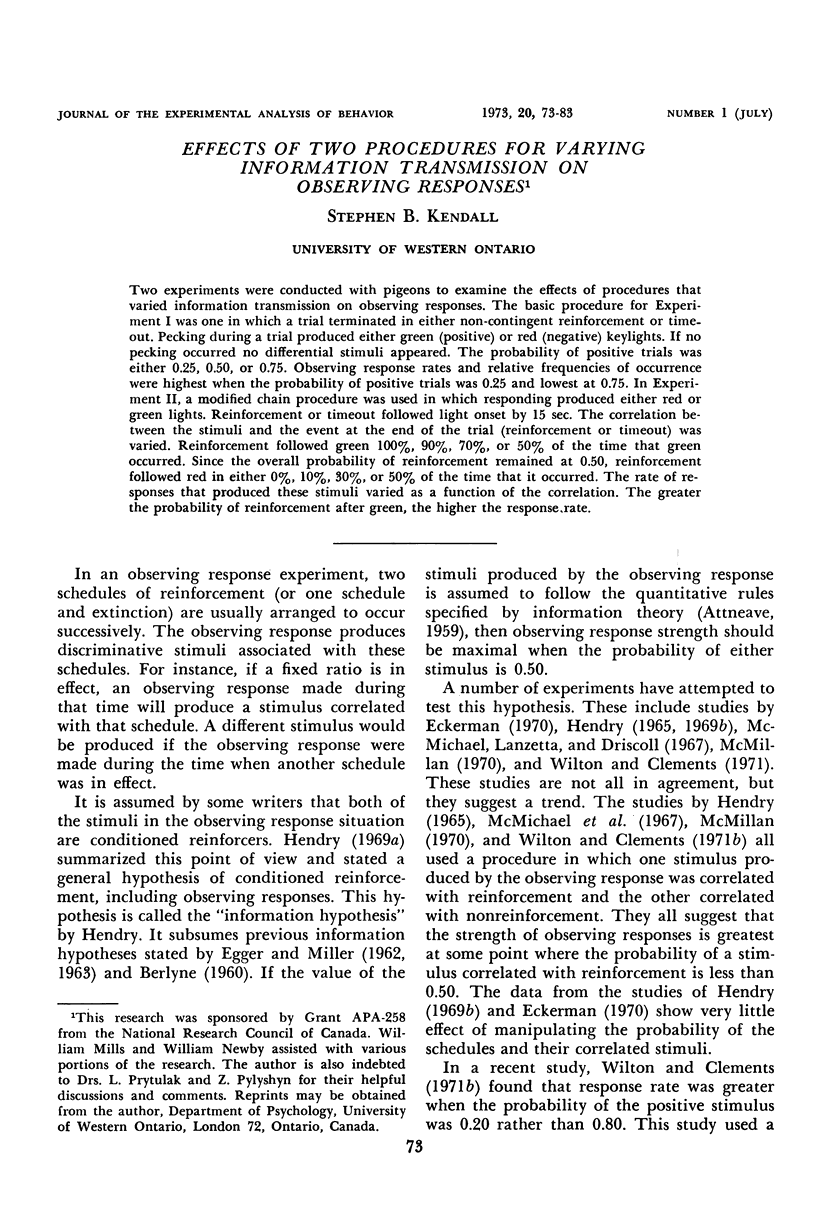
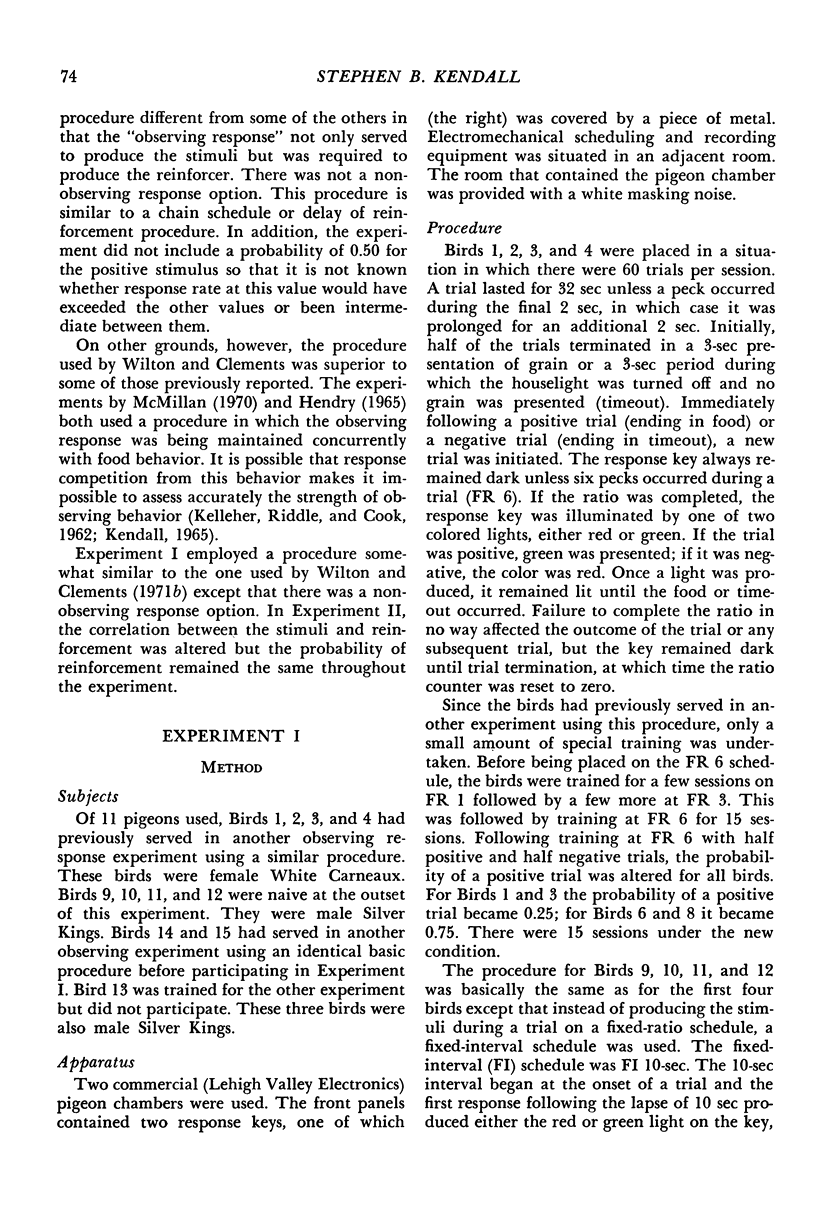
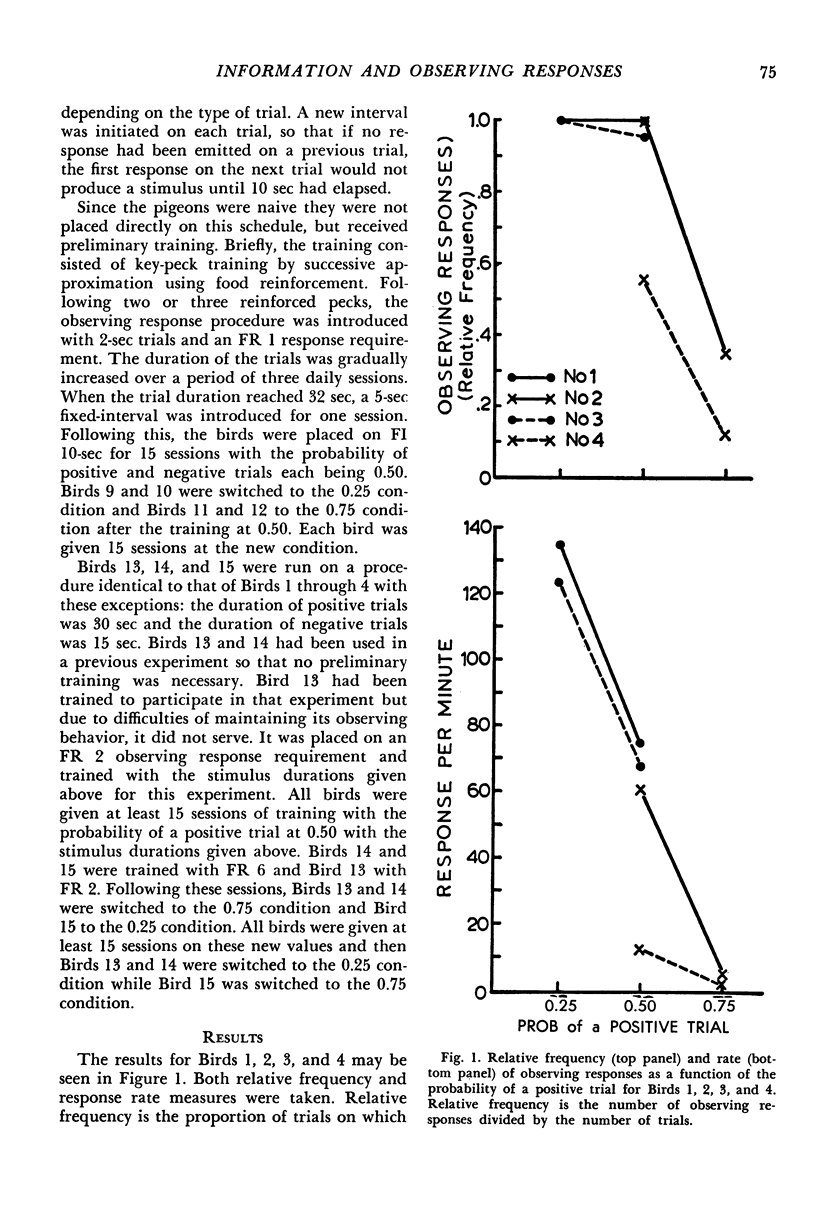
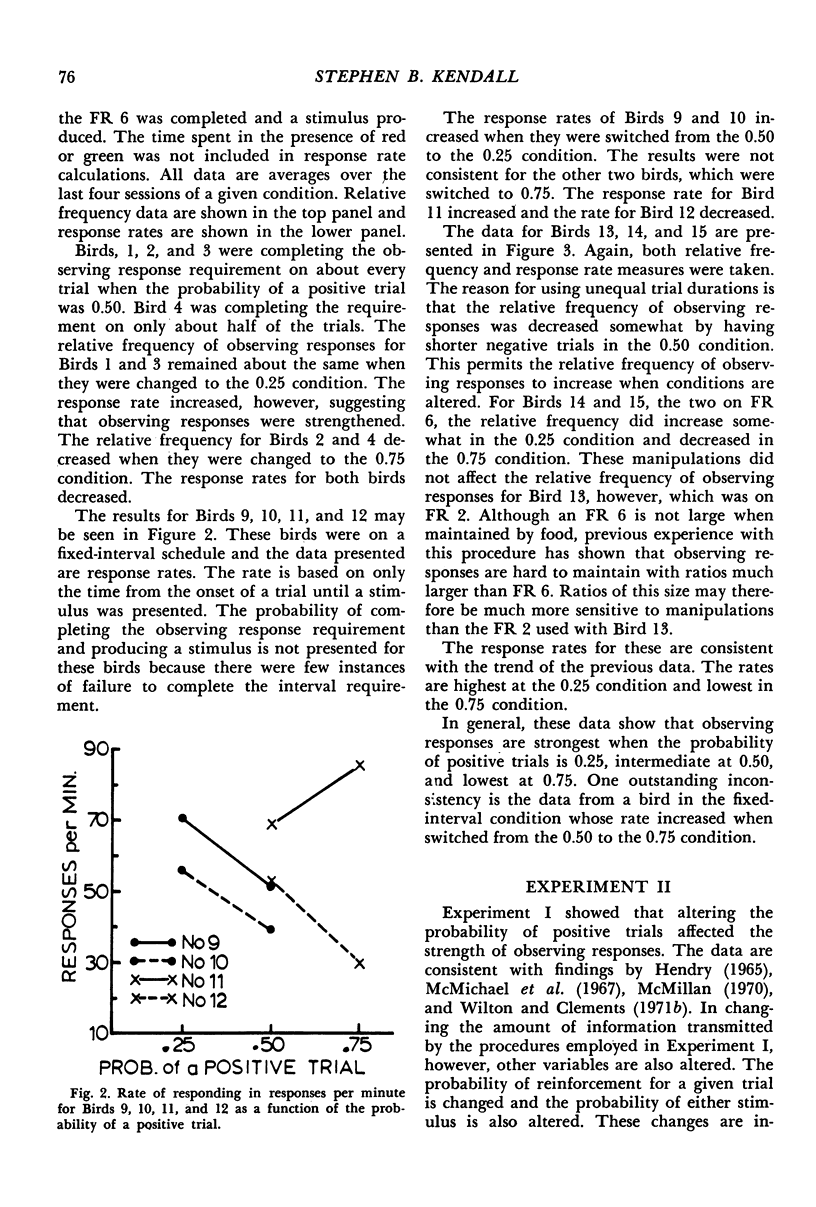
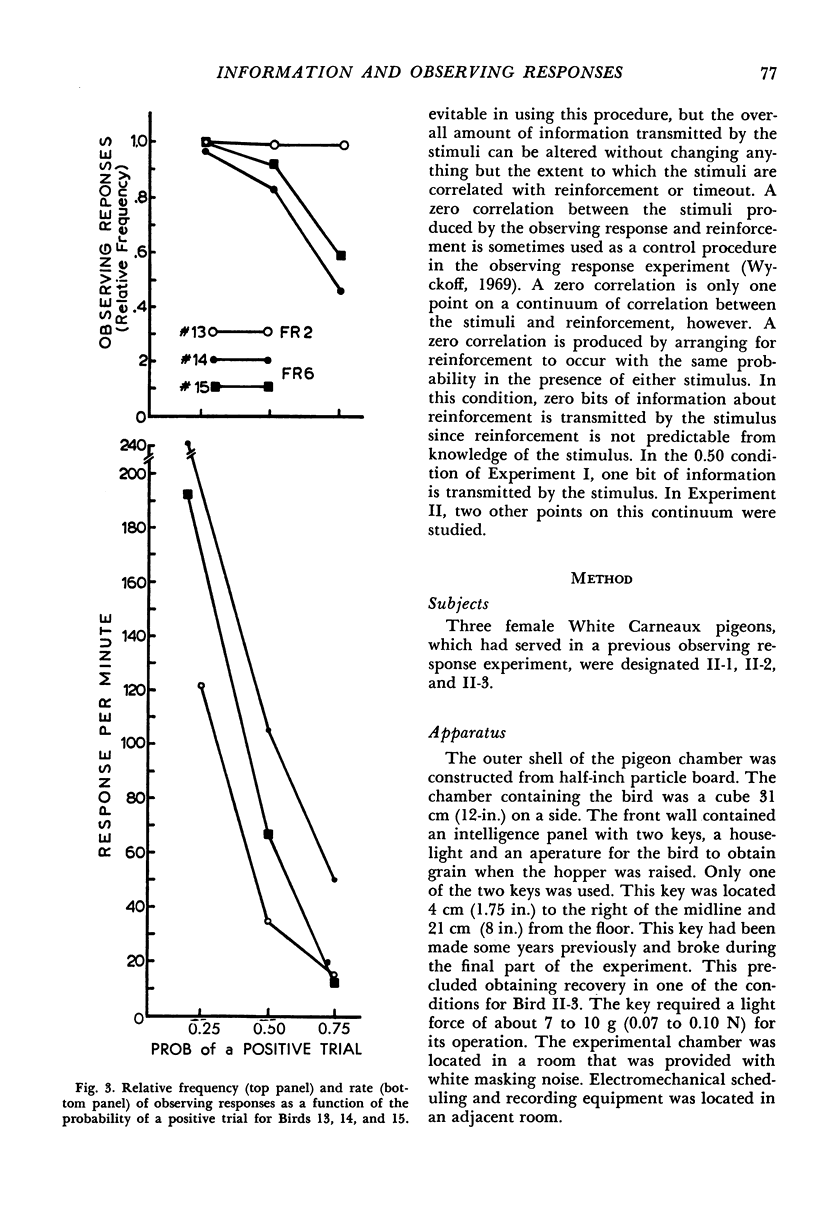
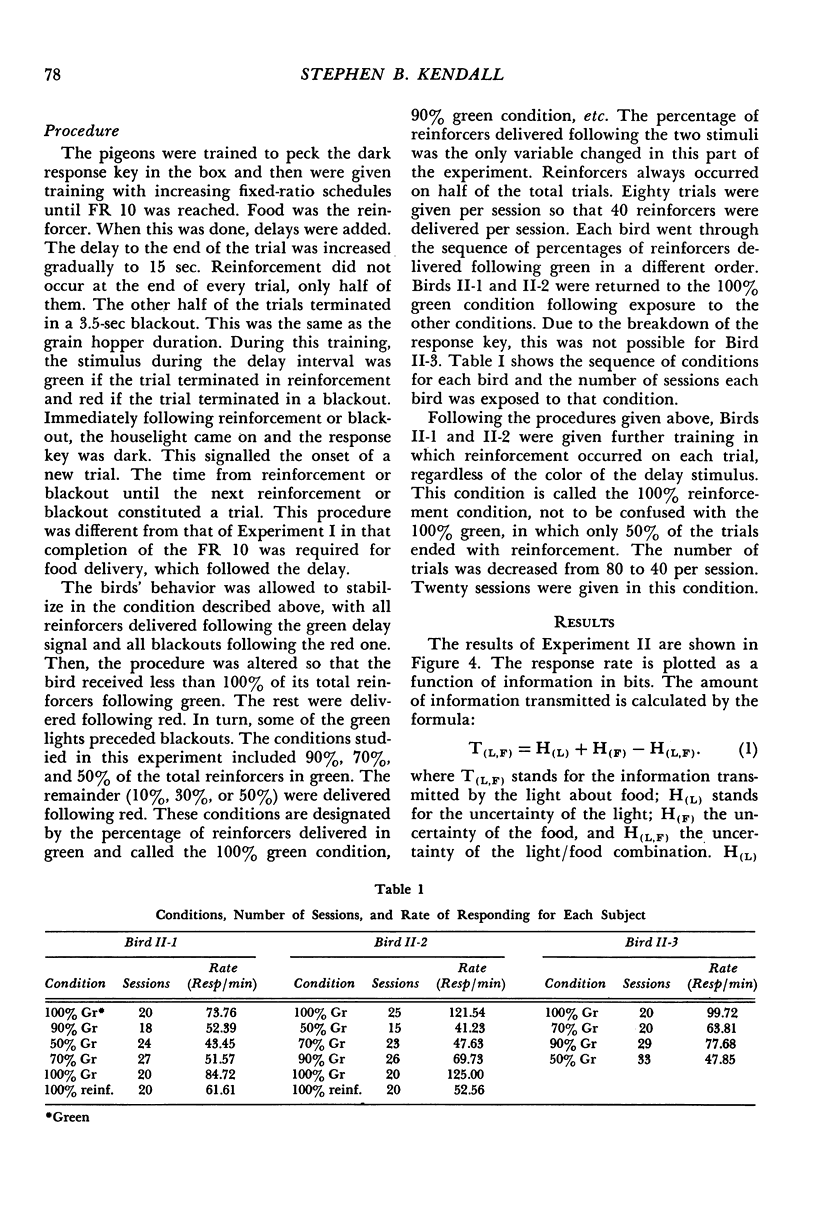

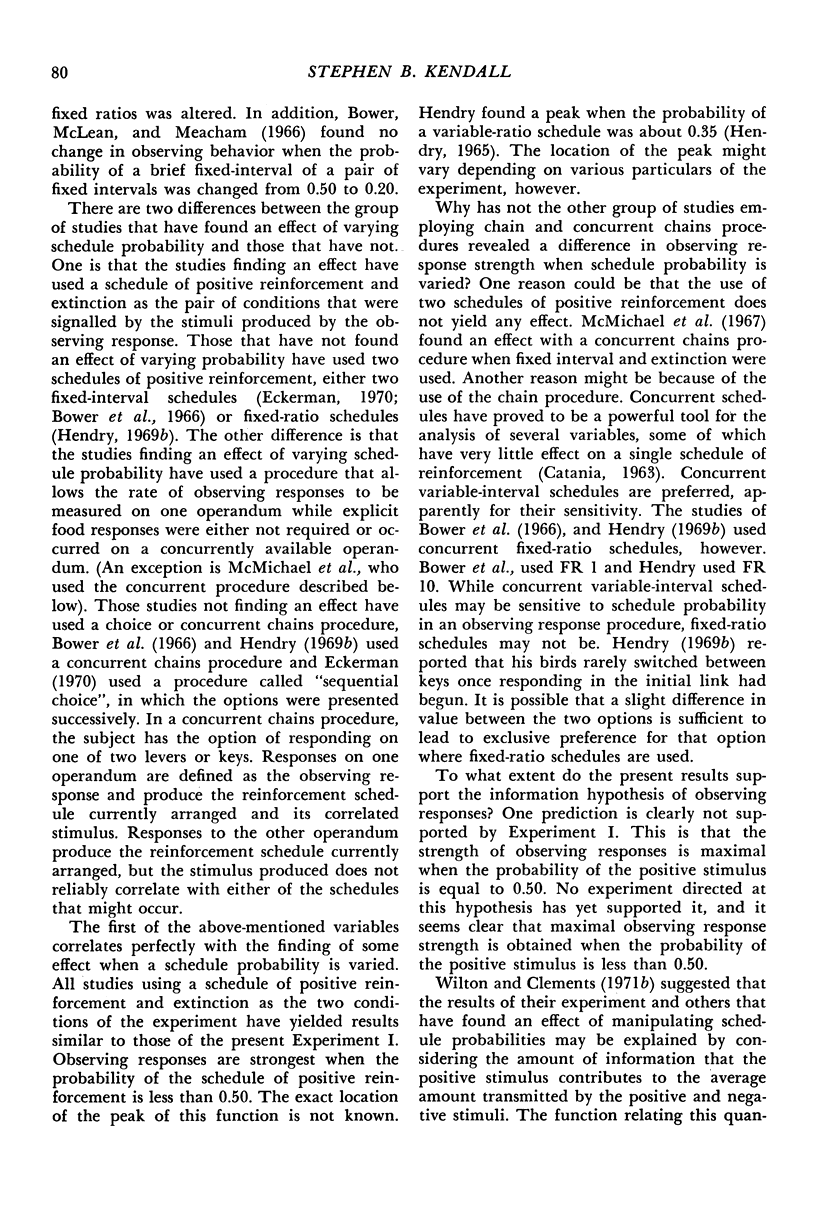
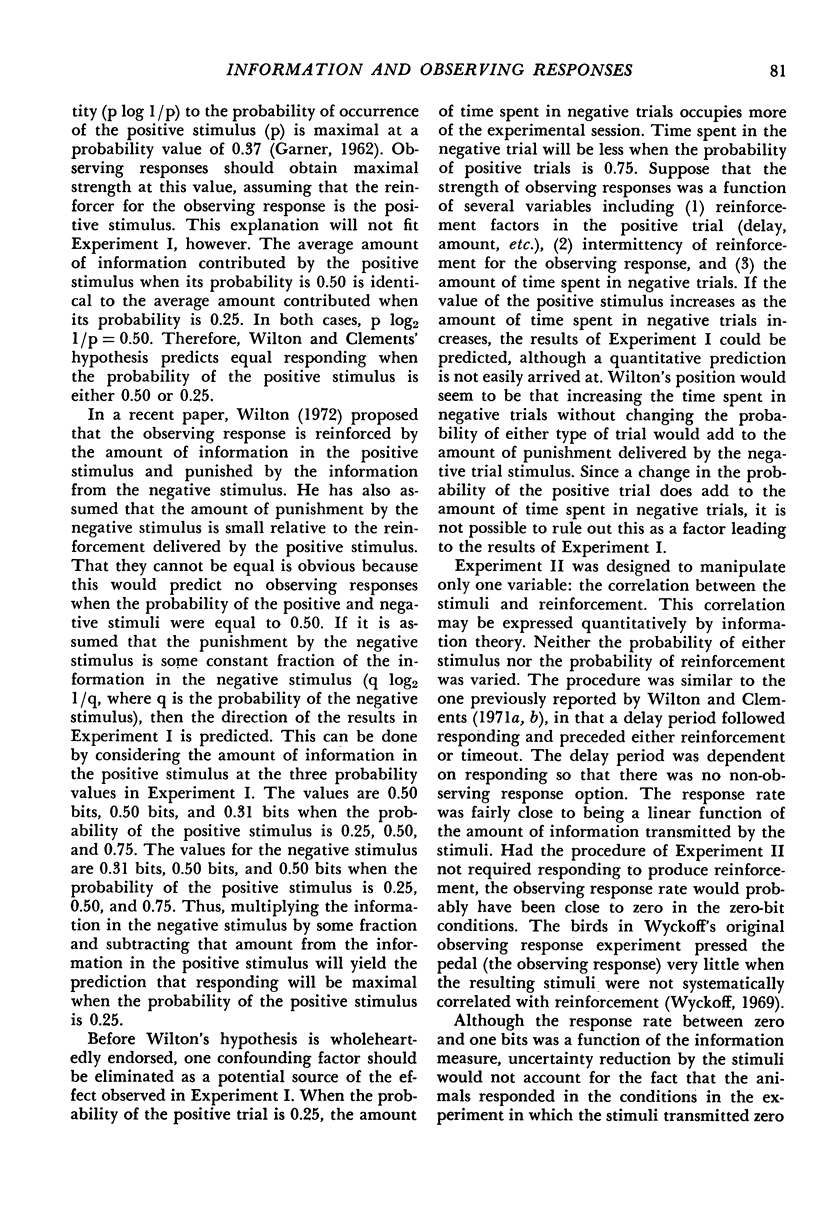
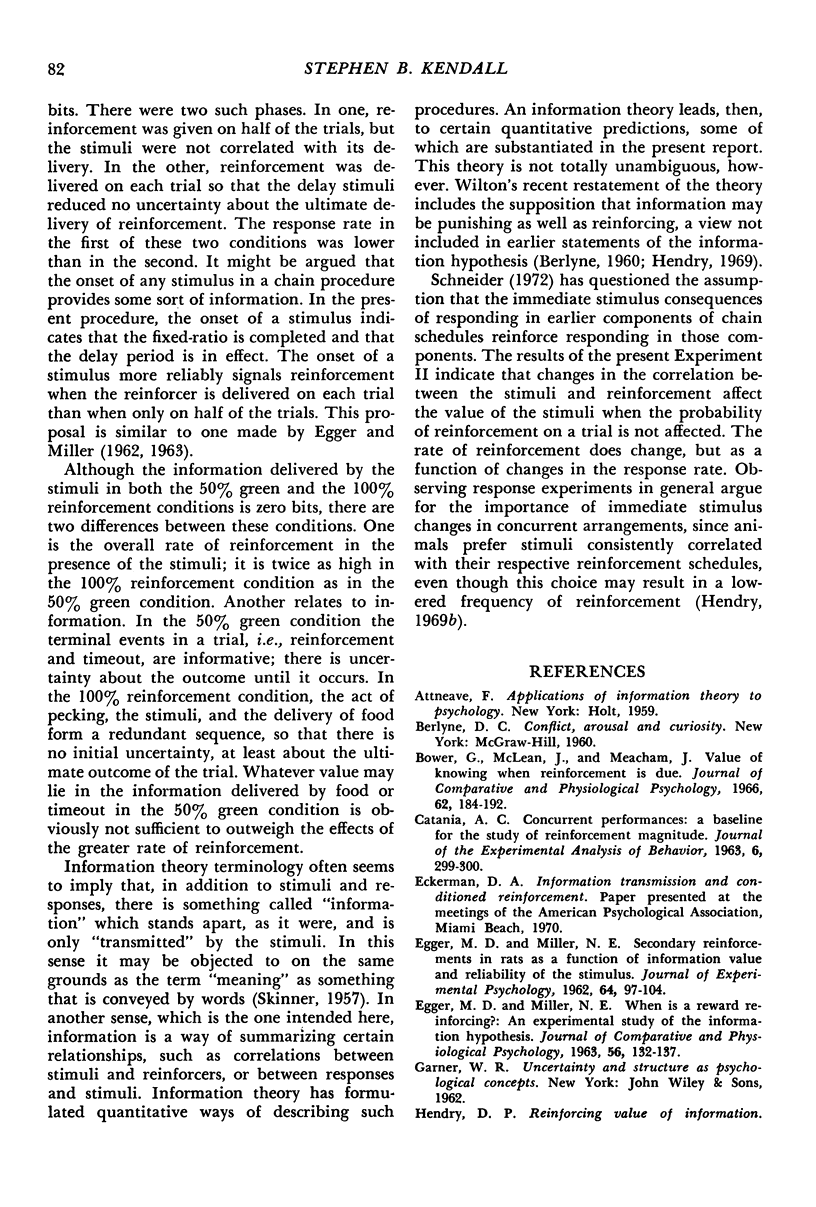
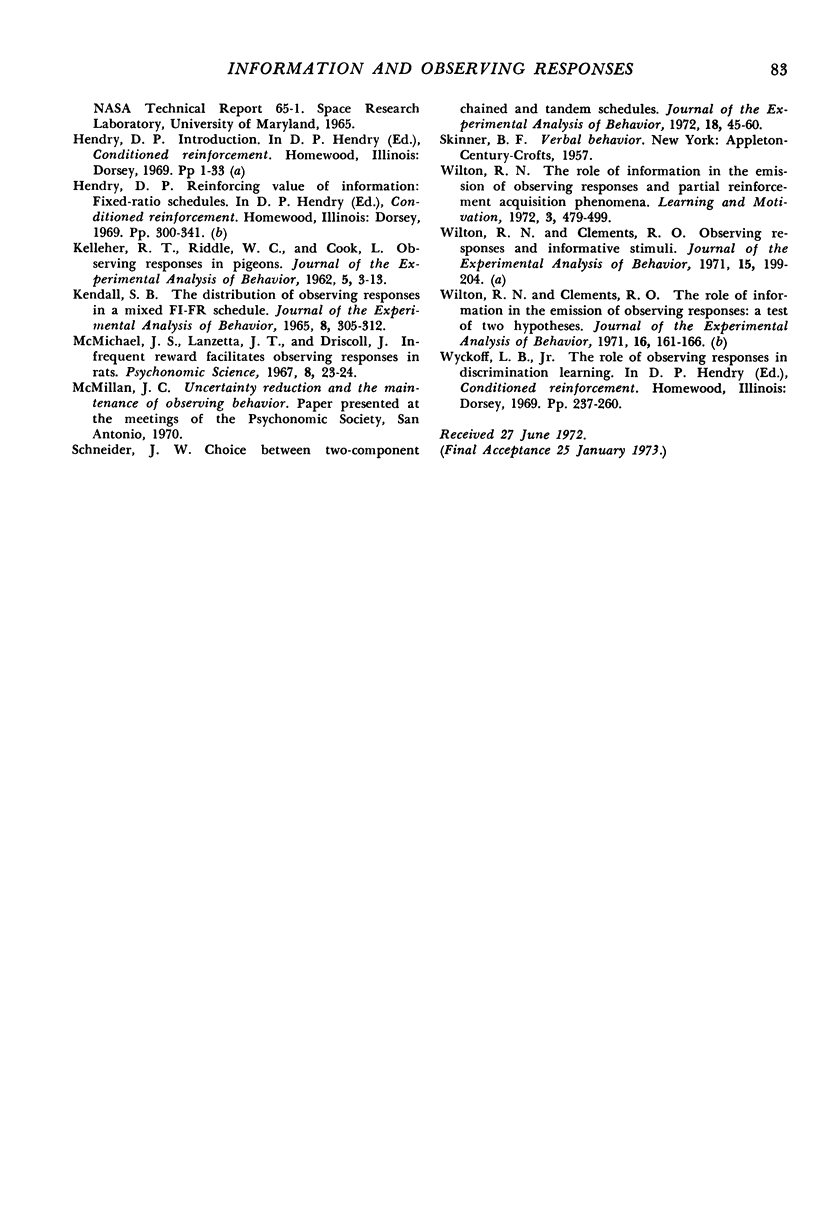
Selected References
These references are in PubMed. This may not be the complete list of references from this article.
- Bower G., McLean J., Meacham J. Value of knowing when reinforcement is due. J Comp Physiol Psychol. 1966 Oct;62(2):184–192. doi: 10.1037/h0023682. [DOI] [PubMed] [Google Scholar]
- CATANIA A. C. Concurrent performances: a baseline for the study of reinforcement magnitude. J Exp Anal Behav. 1963 Apr;6:299–300. doi: 10.1901/jeab.1963.6-299. [DOI] [PMC free article] [PubMed] [Google Scholar]
- EGGER M. D., MILLER N. E. Secondary reinforcement in rats as a function of information value and reliability of the stimulus. J Exp Psychol. 1962 Aug;64:97–104. doi: 10.1037/h0040364. [DOI] [PubMed] [Google Scholar]
- KELLEHER R. T., RIDDLE W. C., COOK L. Observing responses in pigeons. J Exp Anal Behav. 1962 Jan;5:3–13. doi: 10.1901/jeab.1962.5-3. [DOI] [PMC free article] [PubMed] [Google Scholar]
- KENDALL S. B. THE DISTRIBUTION OF OBSERVING RESPONSES IN A MIXED FI-FR SCHEDULE. J Exp Anal Behav. 1965 Sep;8:305–312. doi: 10.1901/jeab.1965.8-305. [DOI] [PMC free article] [PubMed] [Google Scholar]
- Schneider J. W. Choice between two-component chained and tandem schedules. J Exp Anal Behav. 1972 Jul;18(1):45–60. doi: 10.1901/jeab.1972.18-45. [DOI] [PMC free article] [PubMed] [Google Scholar]
- Wilton R. N., Clements R. O. Observing responses and informative stimuli. J Exp Anal Behav. 1971 Mar;15(2):199–204. doi: 10.1901/jeab.1971.15-199. [DOI] [PMC free article] [PubMed] [Google Scholar]
- Wilton R. N., Clements R. O. The role of information in the emission of observing responses: a test of two hypotheses. J Exp Anal Behav. 1971 Sep;16(2):161–166. doi: 10.1901/jeab.1971.16-161. [DOI] [PMC free article] [PubMed] [Google Scholar]


